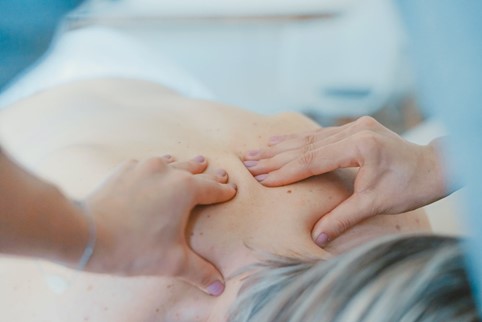Inflamed rotator cuff and shoulder pain: 5 recommendations

The rotator cuff is a group of muscles and tendons surrounding the shoulder joint. An injured or inflamed rotator cuff can cause severe shoulder pain. What can we do in these cases?
Which muscles are involved?
The shoulder rotator cuff consists of the tendons of four muscles: at the front, the tendon in the subscapularis muscle, at the top the tendons in the supraspinatus and subspinatus (or infraspinatus) muscles and, at the bottom, the tendon of the teres minor muscle.
Although these are four different tendons, it was demonstrated some time ago that, generally, they are merged into a single continuous “band” at or near their insertion on the greater tubercle of the humerus, with the sole exception of the tendon of the subscapularis muscle, which is inserted on the lesser tubercle. Therefore, they can be functionally interpreted as a single, combined and integrated structure rather than four distinct anatomical entities.
These four tendons constitute the main dynamic stabiliser of the shoulder, keeping the head of the humerus in the glenoid cavity of the scapula, also enabling rotations of the arm segment. Conditions and inflammations of the rotator cuff are one of the most frequent cause of shoulder pain and disability.
Rotator cuff inflammation and injury
Patients often go to specialist physicians because of a functional limitation of the shoulder and arm and especially because of the pain.
Generally, an acute (inflamed) painful shoulder is a condition associated with tissue damage that has occurred recently and is of limited duration. Frequently, however, the pain may be continuous and may even be felt at rest. In this case, having excluded injury caused by trauma, the treatment usually consists of rest, physiotherapy and, if necessary, drugs taken orally.
Chronic shoulder pain, on the other hand, persists beyond the normal healing time and sometimes a precise cause cannot be identified. In most cases, there is no absolute distinction between acute and chronic pain, but chronic conditions are often due to inappropriate initial treatment.
Chronic shoulder pain may be the result of various intra- and extra-articular factors, such as rotator cuff tendinitis, impingement syndrome, adhesive capsulitis (frozen shoulder), glenoid labrum damage, glenohumeral and/or acromioclavicular osteoarthritis.
Furthermore, the pain may be due to a rotator cuff injury. Most patients with rotator cuff injury suffer pain (the so-called painful arc of motion) when bending between 60° and 120°. Magnetic Resonance is the best way of confirming a suspected injury.
What to do in the case of an inflammation of the rotator cuff
In the case of intense shoulder pain, the specialist physician will perform a series of clinical tests associated to the results of the ultrasound scan or MRI, in order to obtain a precise diagnosis of the origin of the pain. In the case of a rotator cuff injury, the orthopaedic physician will decide, according to various factors (e.g. age, sports practised, etc.) if surgery is advisable or whether to prescribe conservative rehabilitation treatments.
If, on the other hand, the pain is caused by an inflammation, physiotherapy is certainly the best route. With shoulder rehabilitation, the key word is “personalisation”, specifically in terms of timing, loads and working methods. This usually starts with mobilisation exercises and stretching, then moving on to isometric “strengthening” exercises, or exercising using elastic bands, ending with plyometric and proprioceptive exercises.
The physiotherapist’s 5 recommendations
-
- In the case of shoulder pain without rotator cuff injury, consult an expert physiotherapist, who will examine all the structures involved and draft a personalised exercise plan.
- Remember that posture always plays an important role. For example, a hyperkyphotic posture, with the shoulders closed in towards the front, can cause pain in the scapula-humeral girdle.
- Night-time shoulder pain is typical of problems related to the Rotator Cuff. If you start to feel pain, consult a physiotherapist as soon as possible!
- If you play sports that use the upper limbs a lot (e.g. volleyball, basketball, baseball, golf) or you train at the gym, develop a routine of shoulder mobility and strengthening exercises with your physiotherapist, and always do them before training.
- The cervical vertebra often plays an important role in shoulder pain: the physiotherapist must always examine it and treat it if necessary.



